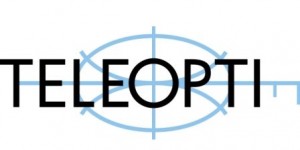Chat staffing algorithm continues thought leadership and innovation on best practices for omnichannel customer service planning

Chat is an ever-increasing part of companies’ customer service offerings, so powerful, flexible staffing calculators are needed to accurately schedule which agents need to be working to optimally answer incoming chat conversations.
Contact centres today must often schedule interactions via instant chat, but such staffing numbers are derived more from guess work and experience than fine-tuned calculations. This algorithm offers the ability to accurately staff chat channels and scale infinitely, becoming a power player for accuracy and efficiency as the contact center expands or its chat services scale up in size.
Teleopti’s chat algorithm expands on Erlang’s original calculations but brings in the dimension of parallelism. Parallelism comes as, unlike most other scheduled tasks e.g. phone or email, an agent can be working on multiple customer chats simultaneously. The new patented algorithm creates resourcing calculations and sets optimal parameters for the number of chats an agent can handle simultaneously, given the external requirements on the chat, such as the contact center’s own KPIs for quality of service or employee satisfaction needs.
Research on chat staffing calculations has been a two-year mathematics doctorate project within the Optimization and Systems Theory division at KTH Royal Institute of Technology’s Mathematics department, in Stockholm, Sweden. The research has been conducted by Teleopti’s Research Engineer and PhD student, Göran Svensson.
Svensson said, “There have been previous works on the phenomena of parallelism but normally in the context of the processor sharing data services. The big difference between this and Teleopti’s new patented algorithm is that a service job in the processor sharing framework is of a known size as soon as it enters the queue whereas a customer’s service need is still of an unpredictable size. Generalizing the Erlang-A model to incorporate concurrency was the first step, this meant increasing the state-space of the problem. Analyzing and solving this problem in steady state was the second step.”

“At Teleopti we hold the mentality that ‘We innovate from the ground up,’ investing in all areas of the WFM innovation process from vital research on algorithms and methodologies through to cutting-edge front-end development for better user experiences,”
“We have an ongoing collaboration with KTH to explore contact center mathematics. Blending detailed research with the development of boundary-pushing functionality means Teleopti builds a WFM solution that is future proof, leading the WFM space.”
Additional Information
Teleopti, a top, global provider of workforce management software, offers a world-class WFM solution that is sophisticated, localized and easy to use. As the largest “best-of-breed” vendor, Teleopti focuses on helping contact centers, back offices and retail stores improve customer service, employee satisfaction and profitability – through optimized, automated forecasting and scheduling with cutting-edge features to empower and engage employees.
For additional information on Teleopti visit their Website or view their Company Profile






